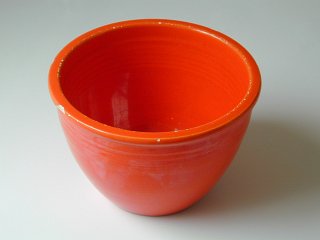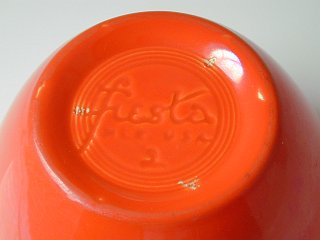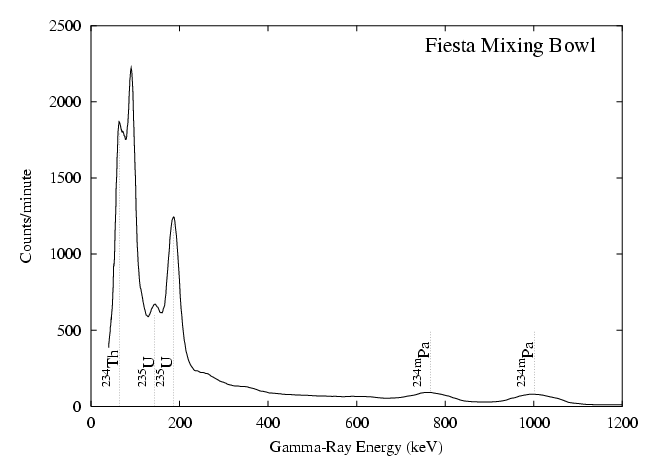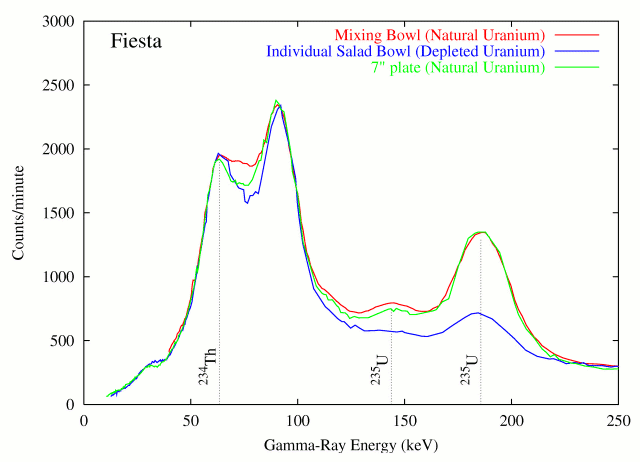

Red glazes used in the making of dishes during the 1930's through 1960's often contained Uranium oxide to give it a bright red-orange color. The Uranium oxide makes the dishes somewhat radioactive. The most famous radioactive dishes were the red Fiesta line made by the Homer Laughlin company but many other manufacturers used these glazes as well. Fiesta is probably singled out because of its popularity. The glaze used on red Fiesta up until 1943 contained naturally occurring Uranium containing about 99.3% U-238 and 0.7% U-235. At that time, the government restricted the use of Uranium as it was needed for the Manhattan Project and the red color was dropped from the Fiesta line. In the 1950's, the government lifted the restriction on the use of Uranium and red Fiesta was reborn. Now the glaze contained depleted Uranium which only contained about 0.2% U-235.
A spectrum was obtained using the red Fiesta mixing bowl shown in the image below. Red mixing bowls were not reintroduced after the color was dropped in 1943 thus the glaze in this one should have the higher 0.7% concentration of U-235.
 |
 |
A spectrum of the mixing bowl is shown in the plot below. Two spikes from U-235 can easily be seen. Also, two daughter products of the decay of U-238 can be indentified including Th-234 and Pa-234m. The effects of background radiation have been subtracted from this plot.

The plot below shows the effect of the change in U-235 concentration after World War II. As mentioned above, mixing bowls were not made after 1943 thus the glaze on mixing bowls contains natural Uranium. On the other hand, individual salad bowls were not made until after 1943 thus the glaze in these contains depleted Uranium. The difference in U-235 content is obvious from the spectrum. The salad bowl radiation level has been multiplied by 1.5 to make the peaks due to isotopes other than U-235 match the mixing bowl peaks. The U-235 peaks then rise only about 1/3 as high above the continuum as expected.

Also shown on the previous plot is the spectrum of a small Fiesta plate. The manufacture date of this item is unknown but its spectrum matches that of the mixing bowl very closely indicating its glaze contains natural Uranium. This item was thus manufactured before the first run ended in 1943.
| Return to Home Page | Latest update: September 12, 2004 |